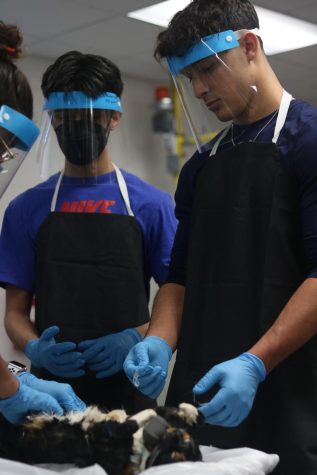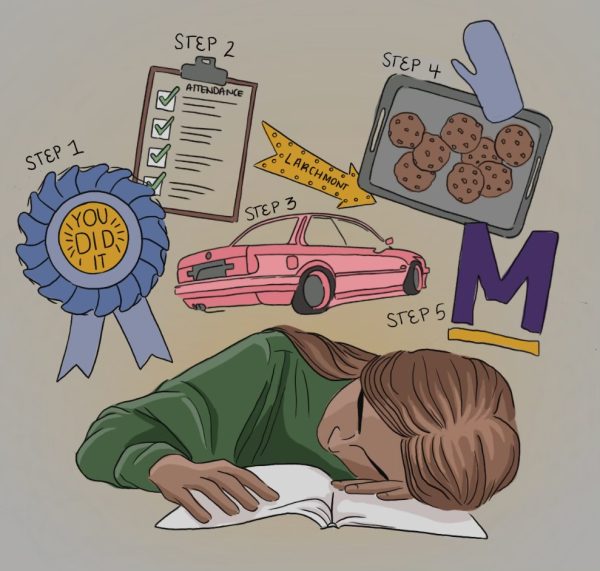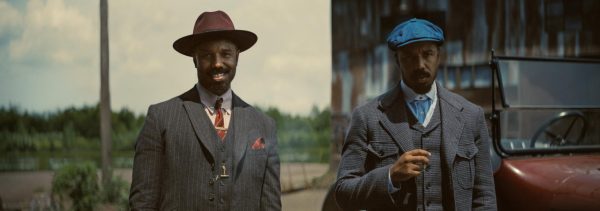Anatomy and Physiology K classes start capstone project over feline anatomy
To study the difference between the feline body system and the human body system, Anatomy and Physiology K students will be taking a capstone course dissecting a cat. The capstone will last from Feb. 2 through March 1, 2022.
Anatomy and physiology K students spent the fall semester studying human muscles and body systems; now they’re comparing them to feline anatomy. Anatomy and physiology teacher Elieen Newland who has been instructing the dissection for 34 years, explains that cats have the best musculature and are easy to acquire compared to other animals such as minks and pigs.
The students go through every system except for the nervous and endocrine. Students will spend three weeks going over muscles then go over other systems. After they finish going over the systems, students are tested on their knowledge of the structures in a practicum.
“It’s kind of eye opening and they do enjoy it,” Newland said. “They get to see instead of just showing pictures from you know, a cadaver online or whatever, they’re actually able to experience it and see it and they can see that.”

The specimens are acquired through a biological supply company, such as Carolina Biological Supply Co. Biological supply companies such as Carolina acquire the cats and other animals from humane shelters, where the animals are euthanized and given to Carolina.
“I stress to my students, to be responsible pet owners, so that we won’t have to work with cats. Maybe one day we can work with other specimens,” Newland said. “There are rats, there are pigs, there’s minks, but because there are so many feral cats that are running around, or you put your animal down and give it to science, they’ll use those and they put them down humanely.”
Junior Kate Howell loves cats, explaining that the capstone is a good learning experience, especially for students going into the medical field. Additionally, Howell emphasizes that it’s hard to see the inside of a cat due to her having two at home.
“It’s really hard to just see the inside of a cat and go home,” Howell said. “I have two cats of my own. So I have to go see my cats after seeing that I just, it’s really weird and it grosses me out.”
The first assignment students had to complete was skinning the cat, a process Junior Brooke Hensley found interesting. Through the dissection, Hensley is able to see how each and every muscle moves and interacts with other muscles. Hensley took anatomy to prepare for a career as a physical therapist.
“I actually want to do this because I really like to study the movement of bodies,” Hensley said. “So actually, this dissection just shows me the different movements just without looking like a human.”
Alfred Dozier is a junior and this is his second year on the newspaper staff as the Opinion and Editorial editor. He enjoys reading, writing and playing...











